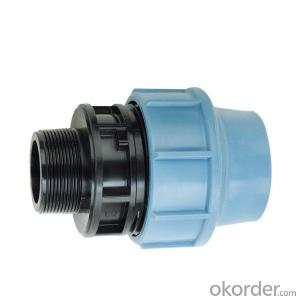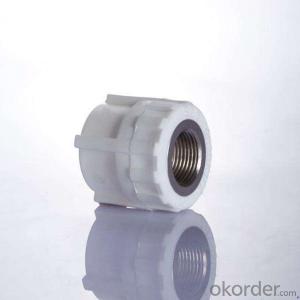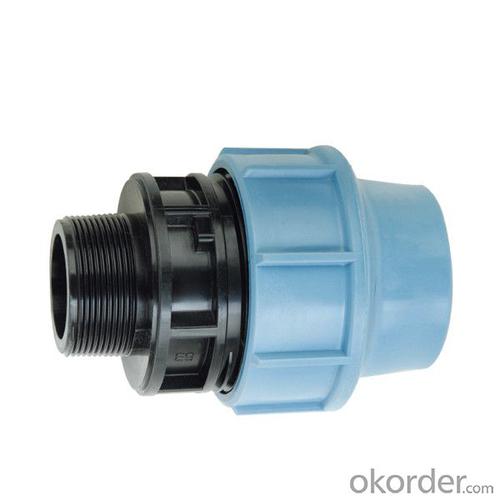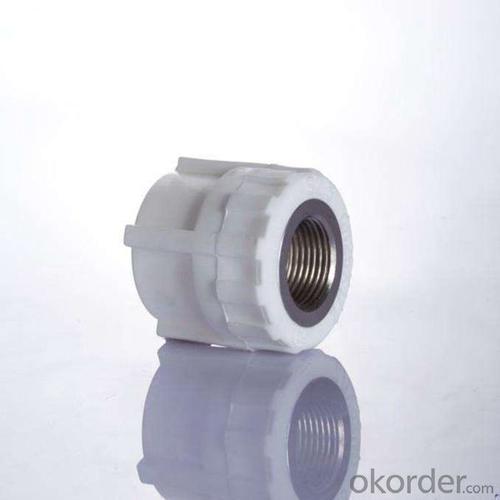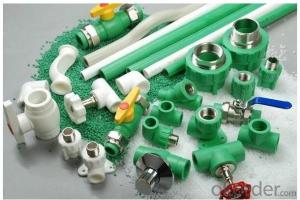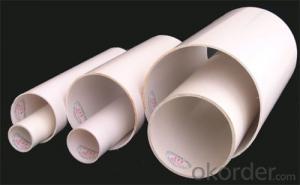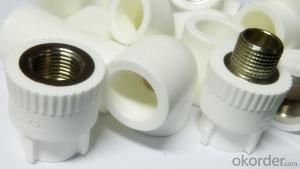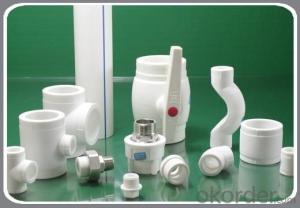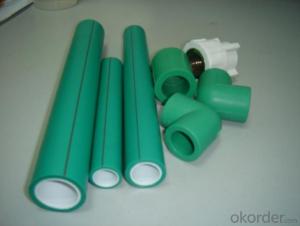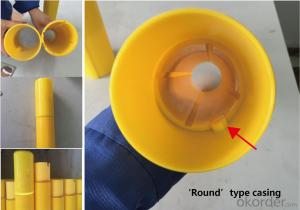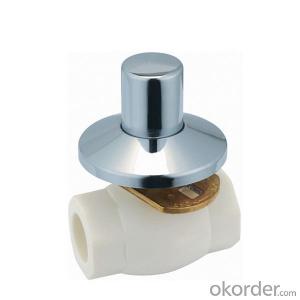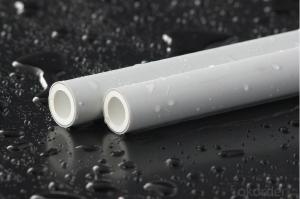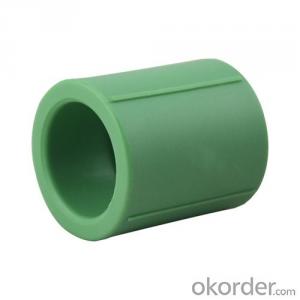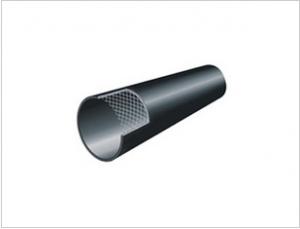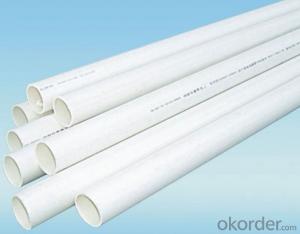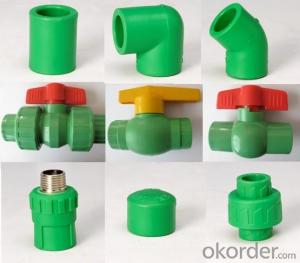Plastic To Copper Pipe Fittings - 2024 New PPR Coupling Fitting for Landscape Irrigation Drainage System from China
- Loading Port:
- Shanghai
- Payment Terms:
- TT OR LC
- Min Order Qty:
- 1000 pc
- Supply Capability:
- 100000 pc/month
OKorder Service Pledge
OKorder Financial Service
You Might Also Like
Product Overview:
1.It is used in industrial fields, agriculture and irrigation.
2.Beauty appearance.
3.Thermal insulation and energy saving.
4.Easy installation
5.excellent heat resistance and pressure resistance
6.affordable price
Applications of PPR Pipe (white, gray):
1) Cold and hot water supply systems for civil and industrial constructions, e.g. in residential buildings, hospitals, hotels, school and office buildings, ship building
2) Drinking water systems and food industry pipe works
3) Central air conditioning system
4) Irrigating system for gardens and green houses
5) Public and sport facilities such as swimming pools and stadiums
6) For rainwater utilization systems.
Packaging Details:
1. Large carton: 515 x 400x 220 Cubage: 0.04532 M3
Small carton: 390x255x250 Cubage: 0.0248 M3
2. PE poly bag+ carton Delivery Detail: 15 days/ 20" container; 25 days/ 40HQ
Product Description
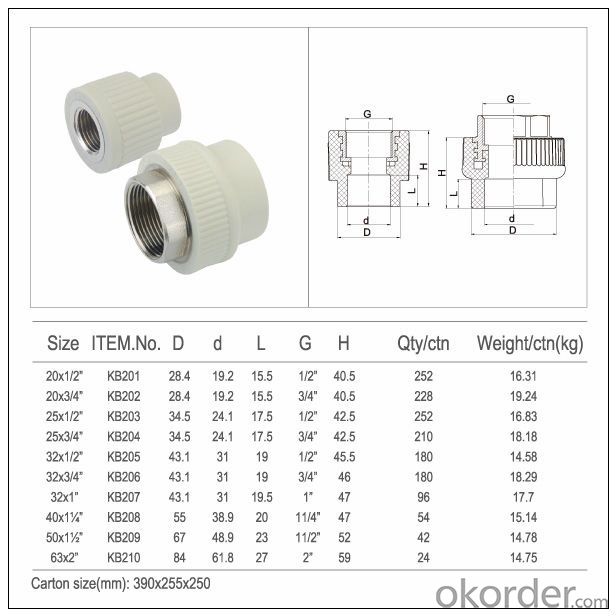
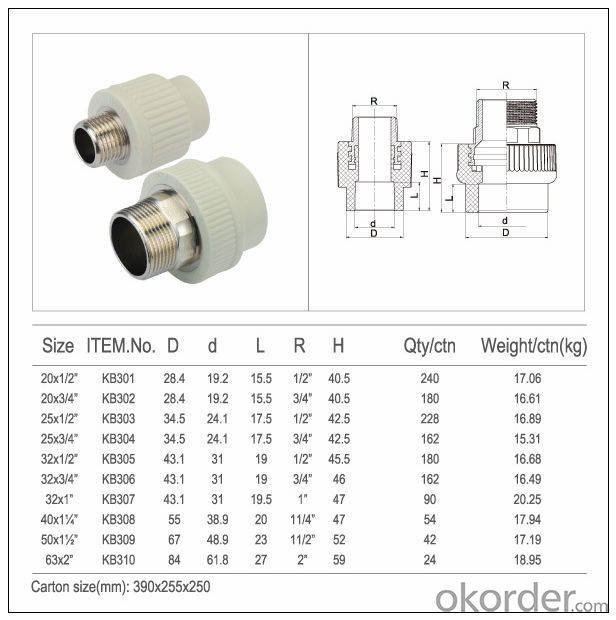
Product Show
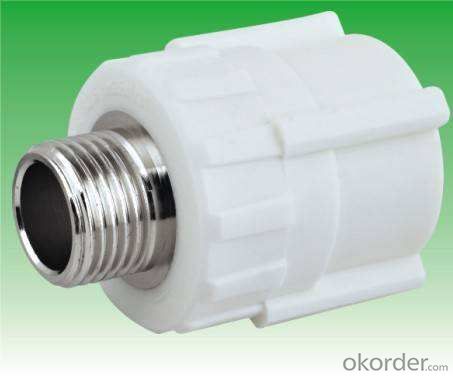
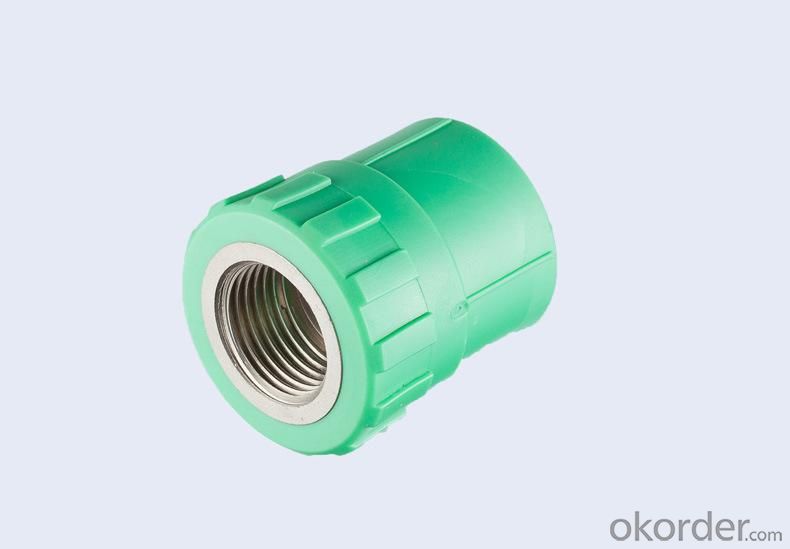
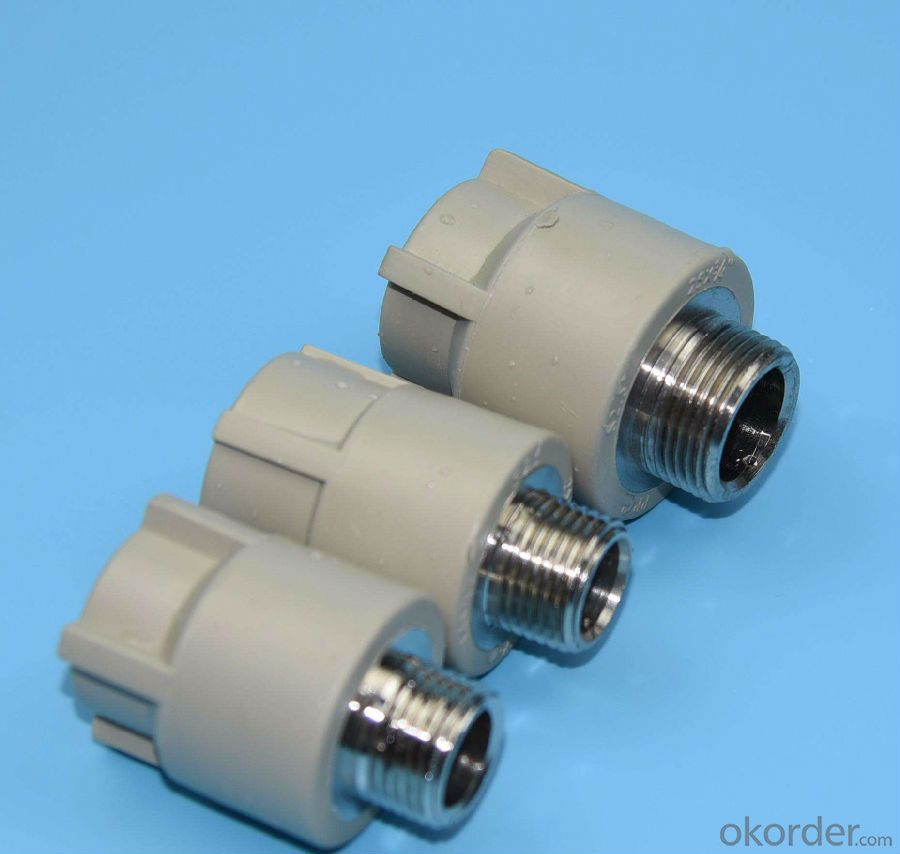
FAQ
Q: How do you guarantee the quality of your product?
A: Every process will be checked by responsible QC which insures every product's quality.
Q: How much is your delivery time?
A: Normally within 30 days of receipt of LC original or prepayment, but mostly according to the specific requirements or the quantity
Q: I need sample, could you support?
A: We can supply you with the sample for free, but the delivery charges will be covered by our customers. For avoiding the misunderstanding, it is appreciated if you can provide the International Express Account for Freight Collect. Also you can have a visit to us, welcome to CNBM!
- Q: PPR pipe fittings, copper pieces, that are embedded parts and plastic parts are not good, appear pressure leakage situation
- Is it a piece of copper pieces, such as you put the copper pieces to do a little shorter, in the upper pipe, so that the tube with silk through copper pieces exposed to the inside of the PPR material, should no longer water seepage
- Q: How do plastic pipe fittings handle thermal insulation requirements?
- Plastic pipe fittings generally have good thermal insulation properties due to the low thermal conductivity of plastic materials. They help in reducing heat transfer and minimizing energy loss, making them suitable for thermal insulation requirements.
- Q: Are plastic pipe fittings resistant to algae growth?
- Yes, plastic pipe fittings are generally resistant to algae growth. The materials used in plastic fittings are not conducive to algae growth, as they do not provide a suitable environment for algae to thrive.
- Q: Can plastic pipe fittings be used in hydronic heating systems?
- Yes, plastic pipe fittings can be used in hydronic heating systems. They are commonly used due to their durability, resistance to corrosion, and ease of installation. Plastic fittings are available in various types, such as PVC, CPVC, and PEX, and are suitable for both residential and commercial hydronic heating applications.
- Q: Can plastic pipe fittings be used for gas piping systems?
- No, plastic pipe fittings should not be used for gas piping systems as they are not designed to handle the high pressures and potential hazards associated with gas. Metal pipe fittings specifically designed for gas applications should be used instead to ensure safety.
- Q: How are plastic pipe fittings different from metal pipe fittings?
- Plastic pipe fittings are different from metal pipe fittings mainly in terms of material composition and flexibility. Plastic fittings are made from durable thermoplastic materials like PVC or CPVC, offering resistance to corrosion, chemicals, and rust. They are relatively lighter in weight, easier to install, and require minimal maintenance. On the other hand, metal pipe fittings, usually made from materials like brass, copper, or stainless steel, are known for their high strength and durability. They can withstand higher pressures and temperatures compared to plastic fittings but may be susceptible to corrosion in certain environments. Additionally, metal fittings are often more expensive and require specialized tools for installation.
- Q: Can plastic pipe fittings be used for food and beverage applications?
- Yes, plastic pipe fittings can be used for food and beverage applications. However, it is important to ensure that the specific type of plastic used is approved for such use and meets all sanitary and food-grade standards.
- Q: Can plastic pipe fittings be used in solar water heating systems?
- Yes, plastic pipe fittings can be used in solar water heating systems. Plastic fittings are commonly used in these systems due to their affordability, corrosion resistance, and ease of installation. Additionally, plastic fittings are compatible with the materials typically used in solar water heating systems, such as copper or PEX pipes. However, it is important to ensure that the plastic fittings chosen are specifically designed for hot water applications to ensure optimal performance and longevity in the solar water heating system.
- Q: How do you prevent leaks in plastic pipe fittings?
- One way to prevent leaks in plastic pipe fittings is to ensure a proper and secure connection. This can be achieved by using the correct size and type of fittings for the specific application, and following the manufacturer's instructions for installation. Additionally, it is important to use appropriate tools and techniques to tighten the fittings adequately without over-tightening, as excessive force can cause damage and lead to leaks. Regular inspections and maintenance, such as checking for signs of wear or damage, can also help identify potential leaks and prevent them from occurring.
- Q: Can plastic pipe fittings be used for chemical waste disposal?
- No, plastic pipe fittings are not recommended for chemical waste disposal as they may not be able to withstand the corrosive nature of certain chemicals and could potentially cause leaks or contamination. It is best to use fittings specifically designed for chemical waste disposal, such as those made from chemically resistant materials like PVC or CPVC.
Send your message to us
Plastic To Copper Pipe Fittings - 2024 New PPR Coupling Fitting for Landscape Irrigation Drainage System from China
- Loading Port:
- Shanghai
- Payment Terms:
- TT OR LC
- Min Order Qty:
- 1000 pc
- Supply Capability:
- 100000 pc/month
OKorder Service Pledge
OKorder Financial Service
Similar products
Hot products
Hot Searches
Related keywords
